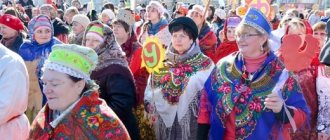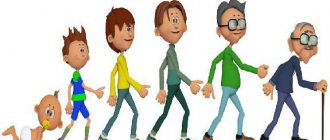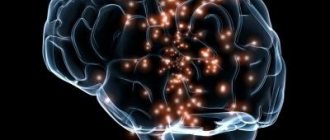Each of us is very familiar with the concept of a crowd. In simple terms, this is a large crowd of people. Chaotic, although not devoid of some organization, which arises due to a common object of attention, event, tradition, circumstances.
But this is not the only thing that unites people who find themselves in a crowd. They are united by emotions, a certain tension, and a general psychological state. This is a complex concept and phenomenon, so everything that concerns it is worth talking about in a little more detail.
general characteristics
Before moving on to the types of crowds, you should understand the definition. There are two options, and both are correct, it’s just that each of them fits a particular case. So the crowd is:
- An initially unorganized collection of people that does not have a common conscious goal.
- A collection of people that has lost its organization and has lost its common goal.
In both cases, everyone in the crowd is in a state of maximum emotional arousal. Such clusters are formed in conditions of natural disasters, which include man-made disasters, earthquakes, fires, and floods. Even during military exercises, mass spectacles, celebrations, protests (demonstrations, processions, rallies, strikes). There are also traffic crowds.
Their types are determined taking into account factors, which include the emotional arousal of people and the degree of activity they exhibit. And now we can move on to the typology.
Active crowd
Characterized by increased aggressiveness, a tendency to cruelty, violence, and destructive actions. Also considered active are the fleeing crowds, which easily turn into acquisitive and panicky ones.
This is a general definition. An active crowd is also considered to be any gathering of people that manifests itself in action. For example, football fans who riot after a match. The case of the White House defense in 1993 can also be considered indicative - then people gathered in an active crowd not to express their feelings or observe the event, but to take part in the action itself.
Acting crowd
This type is the most important in socio-political terms. Accordingly, of all types of crowds, it is the most deeply and closely studied. It is important to note that this type has so-called branches. It is divided into aggressive, panicky, acquisitive and rebellious crowds. The first two will be discussed separately, so now it is worth noting the other 2 types.
- Money-grubbing crowd. It is formed by people who are obsessed with the idea of regaining some valuables or obtaining them. Crowds of this type are extremely heterogeneous. They can be formed by pogromists, depositors of bankrupt banks, and looters. In any case, all participants fight for the possession of values.
- Rebellious crowd of people. It is also called rebel. If the crowd's actions are successful, it becomes “revolutionary.” Instead of success comes failure? Then the crowd ceases to be considered even rebellious. It becomes a “gathering of putschists” or a “random rabble.”
Aggressive type
This type of crowd needs to be discussed separately. In an aggressive crowd, the level of emotional arousal, as well as external and internal activity, constantly increases. Mental stress gradually manifests itself, which is based on feelings of anger, despair, frustration, and misunderstanding. The crowd moves from an active state to an aggressive one due to the appearance of a so-called exciting stimulus. It is he who provokes the emergence of general indignation and indignation.
But the main thing that distinguishes an aggressive crowd is its destructive behavior. Crowds of people who are united by a feeling of fear, which is usually caused by danger to life, are divided into panic and those fleeing. Their behavior becomes destructive - the level of awareness of the actions being performed falls, the critical attitude to the situation disappears, and the experience of fear becomes more acute.
And panicked crowds are more dangerous than those fleeing. Because their behavior poses a greater threat to people. In a panicked crowd, the organization is completely lost, and its participants begin to behave unconsciously, mechanically, and inappropriately. They are completely consumed by fear. A fleeing crowd, which is more predictable, can be subordinated to the organization, since its participants retain the ability to regulate their behavior and be aware of what is happening for some time.
Crowd types and behavior patterns
The main mechanisms of spontaneous behavior are: mutual infection, suggestion and mass imitation of individuals to each other. The combined action of these three mechanisms provides an emotional “excitement” that leads the subject to a state in which he loses the ability to control himself and finds himself at the mercy of strong irrational impulses.
According to G. Le Bon's law on the “spiritual unity of the crowd,” a person, regardless of his lifestyle and occupation, when in a crowd, will think, feel and act completely differently. In a crowd, a person is capable of such cruelty and violence that he would never commit alone. Now he thinks and acts as the state of the “collective soul” of the crowd dictates. Thus, the history of the Wild West is famous for “lynchings”, when an angry crowd hanged a caught criminal. Often it was not the real criminal, but an innocent person. But he fell under the “hot hand” of the mafia and committed inappropriate actions that were not imitation of the mafia. When those who lynched this man were asked to carry out similar actions, but on their own, they categorically refused, not imagining that they could do it.
For the same reason, the psychological characteristics of human behavior, 6 or more people were brought with weapons for execution. When they shot, each of them secretly hoped that it was not his bullet, but the bullet of another shooter (so it was not me who killed, but another), which was perceived more calmly by the nervous system and was not put into the box of “remorse.”
Deindividuation occurs.
Deindividuation is a loss of self-awareness and fear of evaluation. Deindividuation occurs in group situations that provide anonymity and do not focus on the individual.
When high levels of social arousal are accompanied by a dilution of responsibility, people may push boundaries and lose their sense of individuality. The result can be actions ranging from mild inhibitions (swearing at a judge, shouting at a rock concert) to impulsive self-expression (gang vandalism, orgies, theft) to destructive social explosions (police violence, street vandalism, lynching).
Based on the level of activity, crowds are divided into passive, active and aggressive.
Passive crowd. A characteristic feature is the absence (concealment) of emotional arousal. In such conditions, people are only weakly connected by information and therefore cannot act together. They calmly wait for something and move relatively independently of each other (crowd at a train station).
Here is an example of a special characteristic of passive audience behavior.
The young man was stabbed in the stomach while returning home. After the attackers left the car, the remaining 11 passengers watched in silence as the young man bled to death.
A woman accidentally fell in a store and broke her leg. She was suffering and asked for help. Streams of shoppers passed her for 40 minutes until finally one person helped her get to the hospital. What is shocking is that in the above cases, not a single person tried to help.
It has been experimentally established that the presence of other people significantly reduces the possibility of interference. About 50 experiments were conducted before 1980, and it was found that in 90% of cases, bystanders were inclined to help when they were alone. The phenomenon of social inhibition when providing assistance in emergency situations manifests itself in the group in the form of three socio-psychological processes. 1) Social inhibition. A person tries to avoid actions that might make him feel awkward in the presence of other people. 2) Informational social influence - adopting the behavior of other people. In a crowd, it is often immediately obvious that help is needed. By observing the actions of others present, a person may decide that interference is undesirable. 3) Diffusion of responsibility. If the subject observes the event alone, he bears full responsibility for the victim. On the other hand, the presence of other people nearby weakens the sense of responsibility.
Active crowd. This is a crowd of people in a state of emotional excitement, which creates a psychological readiness of people for joint action. They form similar social attitudes towards certain types of behavior. In an active crowd, connections between people become stronger and the exchange of information becomes more intense. In a state of internal activity, the crowd is psychologically ready for joint action, but is not yet active.
Aggressive crowd. This type of crowd is characterized by a high level of emotional arousal, internal and external activity. Over time, this crowd develops a new state associated with the accumulation of psychological stress, feelings of despair, anger, and so on. The main characteristic of an aggressive crowd is destructive, disruptive behavior towards objects or people. An example would be sports fans - fans.
Depending on the type of behavior, there are ordinary, conventional, actor and expressive crowd types.
Expressive type
The name itself defines the characteristics of this type of crowd. Expression is a vivid manifestation of thoughts, moods and feelings. And also temperament. What is an expressive crowd? A group of people that rhythmically expresses a certain emotion. It could be anything - indignation, joy, anger, enthusiasm.
A striking example is people chanting a slogan at a rally. Or football fans, their entire crowd cheering for their favorite team. In some cases, the rhythmic expression of emotions takes on an intense form, resulting in the phenomenon of mass ecstasy.
In terms of characteristics and education, the expressive crowd of people is similar to the active one. Its participants also lose self-awareness, they also begin to come into contact with mindless and fast-acting responsiveness.
But there is a fundamental difference. The fact is that participants in an expressive crowd do not develop an image of a particular goal. Accordingly, suggestion does not lead to the creation of an action plan and its implementation directly. It can be expressed in simple language. An expressive crowd does not act - it simply succumbs to excited movements. In such cases, the external expression of feelings is an end in itself.
Aspects of Crowd Psychology
What is a crowd man? It is quite obvious that he has to rebuild his consciousness to fit common values. In a human gathering, an individual loses his individuality, ceases to be a person. “Everyone ran - and I ran!” Often a person “returning” to a normal environment cannot clearly answer the question of why he performed certain actions; Indeed, in a large mass of people, an individual is often not aware of his actions, obeying a certain collective mind.
Such collective consciousness, however, was inherited by people by nature. In the animal world, collective behavior is represented very widely. Thus, birds in the same flock simultaneously fly up, as if on command. Ants spend their entire lives guided by a “single superintelligence,” which does not have a single carrier. The meaning of such mental organization is clear. After all, an ant individually is absolutely helpless; but even a small anthill can accommodate several million individuals, which turn into an almost invincible superorganism. As part of a close-knit team (more precisely, a gathering), animals can protect themselves from enemies and competing communities, prepare long-term food supplies, and build powerful residential and protective structures. Under such conditions, the impulse to “stick together” is automatically triggered, even if it contradicts the individual interests of community members.
Primitive people who lived in herds probably behaved the same way. Guided by instinct, emotion and collective intelligence, they were unaware of the complex philosophical concepts that we constantly encounter. In our time, the criterion of intelligence is considered to be independence, the ability to act alone or to freely unite in small groups for specific, carefully formulated reasons. Therefore, the man of the crowd today seems to us unreasonable, crazy, a wild idiot. In fact, in a huge spontaneous gathering in a human being, a person as such dies (a thinking, conscious, creating entity) and a wild beast, a biological principle, awakens (an entity driven by the simplest physiological impulses, according to “biological logic” called upon to preserve the community).
At the same time, the crowd man is entirely guided by emotions, and not by reason. And the more violent and violent the general emotions are, the more difficult it is for an individual not to fall under their influence. How can one explain the fact that a person is sincerely surprised by the madness of the crowd when he looks at it from a distance, and then connects to the general madness, finding himself in the same gathering? Apparently, the underlying motive for this is a feeling of freedom and permissiveness. This is very important - not freedom and permissiveness themselves (which, by and large, are absent in a spontaneous gathering of people), but their feeling.
The fact is that modern man is a student of civilization. In his physiological essence, he is an ordinary animal, having certain bestial impulses (although in the process of evolution his instincts are suppressed). But civilization puts a curb on man, forbidding him to follow these impulses and imposing abstinence. In most countries of the world, modern people do not even have the right to physical self-defense, or this right is severely limited: the state has a monopoly on violence. A person involuntarily feels depressed - after all, even if he escaped the attack of intruders, it was only because he, like a small child, was overshadowed by a powerful state.
The psychology of the crowd is such that it frees a person from such conventions and gives him the opportunity to “liberate himself.” Here you can give vent to accumulated negative emotions, tear apart an enemy (real or imaginary), and feel like a full-fledged master of your life. The person returns to his “natural state” and can behave in accordance with his “deep impulses”, which for a long time had to be hidden and suppressed. This is the feeling of boundless freedom, which in the conditions of a spontaneous gathering acts like a drug.
It happens that the effect of this drug is so strong that a person loses the remnants of his mind. And then what crowd psychology calls mass hysteria arises. At such moments, as Bekhterev put it, the gathering behaves “more stupidly than an individual, and ceases to be a collection of rational beings.”
Conventional crowd
It consists of people who gathered in a certain place at a specific time for a reason, but with a predetermined purpose. Examples of this phenomenon surround us everywhere. Take, for example, spectators of a theater performance, listeners of a symphony concert, or football fans.
The peculiarity of this type of cluster is that its participants comply with the rules and generally accepted norms governing their behavior. This makes the crowd predictable and orderly. You could even say that such a gathering of people is close to the public. This concept also means a set of persons who are the object of the influence of something - education, literature, events, advertising, art, actions (performances), etc.
How to control a crowd
Politicians, religious leaders and other active and ambitious people, using their knowledge of the psychology of the crowd, try to control it. This, of course, is an absolutely immoral and dishonest thing, however, on the other hand, the presence of a leader at the gathering to a certain extent reduces its danger. It seems simple to control the human element, because it, like any herd, is ready to obediently follow the leader. However, here lies the difficulty: a potential leader must be able to attract the attention of the participants in the elements, and this is very difficult to do in a storm of emotions.
Psychologists and political strategists use several methods to attract the attention of people in a gathering
:
- Demonstration of strength and power
. This is the use of the same animal model: members of a spontaneous community strive to rely on their strongest and bravest representative and follow him, because this subconsciously inspires security. Since the human element is a primitive phenomenon, the leader’s actions can be simple: it is enough to be taller than all other people, have brighter clothes, shout louder, etc. - Expressiveness of performance
. The leader’s speech should be loud and emotional, thereby setting the tone for the entire gathering and forming a “collective mind.” Therefore, not a single political or any other rally today is complete without technical means of sound amplification (megaphone, microphone, etc.). - "Clockwork" performance
. People in a spontaneous meeting are not ready to listen to long, lengthy monologues explaining all the facts and considerations; they require short and succinct phrases that convey not so much information as an incentive to action. Therefore, the main part of the leader’s speech becomes slogans that program the community.
It is typical that a potential leader should look like he belongs to the community. If this is an outsider, then it will be much more difficult for him to cope with the gathering. Therefore, provocateurs and instigators initially quietly penetrate into the raging community and follow the general mood, without showing themselves in any way, and only after some time they begin to stand out: they shout louder, shout out more aggressive slogans, use special sound and visual effects that force people to unwittingly turn to them attention (shots in the air, flags, unfolded posters, etc.). This behavior also allows you to reliably subjugate people in a gathering: by the time the provocateur comes out of his “hiding”, the people have already lost the remnants of their reason and obey only spontaneous reflexes. A provocateur can lead such a crowd anywhere, even to the point where its behavior contradicts the original plans. Thus, a skillful leader can force the people who came to the square to overthrow the government to dance a merry dance, pray to God, and clap their hands. When all the energy of the gathering is spent, it self-destructs: tired people will go home.
There are cases when the gathering is too passive and cannot be “stirred” with regular shots into the air. Then the provocateur begins to shoot not in the air. The contemplation of fresh blood and defeated comrades gives the gathering the necessary degree of aggression, driving it into a frenzy.
It is recklessness, emotionality, monotony of behavior, and unconsciousness that distinguish a crowd from a collective - a conscious collection of people. A person joins a team, guided by some personal considerations that he strives to defend in it. The team is capable of self-organization, a leader also appears in it, who is a member of this team, but here the leader does not have such unlimited power over ordinary participants. If the leader's decisions do not satisfy the wishes of the other participants, the team disintegrates; if someone does not agree with the general decision, he is free to leave the team without any special consequences for himself. In an organized team, each participant plays a role assigned to him and acts largely independently, but at the same time compares his actions with the common goal and the actions of others. In a spontaneous gathering, the leader’s task is to suppress the awakening individuality, block the minds of the participants and keep everyone “in the same direction.” He can launch a scheme like a “bucket of crabs,” when a spontaneous gathering will cleanse itself of “awakened upstarts.” It is known how crabs behave when placed in a bucket. Each of them could get out of it on his own, but when he reaches the top, the other crabs knock him down with their claws. Thus, in a spontaneous gathering, participants oust or physically destroy those who could lead the entire mass in the original direction, and the provocateur who deceived people, on the contrary, receives universal recognition.
A skilled provocateur can not only infiltrate an already prepared gathering, but also create his own. It can all start with a single picket: random passers-by are attracted by a person holding a poster or shouting a certain speech into a megaphone. In order to assemble his spontaneous “army,” a potential leader must understand the current political and economic situation and determine the mood of society. Here is an example of how you can create such an “army” almost out of thin air.
How was the cult of the Orthodox “saint” Matrona of Moscow created? At the very beginning of the “dashing nineties”, the revitalized Russian Orthodox Church had not yet fallen into “monstrum”, trying to preach primarily the ethical side of religion. However, the Russian Orthodox Church attracted little attention to itself, since it had a lot of strong competitors - various sects, healers, and psychics that flooded the country. They offered millions of desperate people what they had been waiting for for so long - miracles, or rather, faith in miracles. Witchcraft, magic, penetration into “forbidden territories,” communication with omnipotent supernatural beings - all this was much more interesting than boring Orthodox sermons about love, mercy and abstinence, especially since Orthodox teaching seems to categorically reject witchcraft practices. Even those who remained faithful to it during the harsh years of “scientific atheism” turned away from the Russian Orthodox Church: after all, the church gave believers hope, and the onset of the “wild nineties” after the collapse of the Soviet Union was perceived by them as the collapse of hopes: after the disappearance of the “evil empire” came an even greater “ evil,” in comparison with which the former Soviet regime seemed almost heaven on Earth. And under these conditions, the Russian Orthodox Church decided to act in a new way. She sanctioned the appearance in the church environment of the same “healer” and “miracle worker” as all these psychics and foreign spiritual leaders were. Various myths were composed about the “miracles” that Matrona performed both during her life and after her death. According to the church, the “holy” water from her grave, and flowers - again from the grave, had miraculous properties. Believers were encouraged to cut these flowers and add them to salads, and use them to prepare healing infusions. This large-scale action, in which hundreds of priests, monks and enterprising lay people took part, did its job: the people, thirsty for all kinds of miracles, flocked to churches. The income of the Russian Orthodox Church and its prestige rose sharply. The religious gathering did not even pay attention to the fact that in this case the Russian Orthodox Church grossly violated its own principles, committed a mass of mortal sins, recklessly engaged in charlatanism and crudely and primitively deceived people. Believers did not go into these details and did not even try to verify the hastily concocted legends and myths.
Another example is the story of how democratic Czechoslovakia suddenly, absolutely peacefully, became the most communist country in the world. At the end of the forties in Czechoslovakia, the local communist party was not particularly popular - the country developed in common with Western European countries. People could watch something terrible happening in the neighboring Soviet Union: massive artificial famine, repression, a totalitarian regime. And then the Czechoslovak communists began to give speeches in which they declared: they say that in the USSR they are building a “wrong” communism, and we will build our own, Czechoslovak and “correct” one. Propagandists adjusted to the general background and, together with the people, began to condemn the “Soviet system.” People liked it, and the communists won a landslide victory in the next elections. The very next day, communist leader Klement Gottwald began to build “Czechoslovak communism,” carefully copying the Stalinist model: repression, persecution of dissidents, militarization, bullying, ubiquitous propaganda and censorship. Residents of the country were shocked: they did not understand how they could vote for “this” in a single and friendly impulse. But even in subsequent years, Czechoslovakia was ahead of the rest in “communization”: the number of Communist Party members per hundred thousand inhabitants here was the largest in the world. This was also facilitated by the ability of political leaders to “come to an agreement” with the people.
Currently, political technology has reached its peak. As violence and open dictatorship are condemned and banned by the world community, politicians resort to subtle methods of controlling large masses of people in order to create the appearance of democracy. Today it can be difficult to distinguish the actual expression of the will of the people from actions at the behest of provocateurs. The most terrible thing is that the “people” themselves sometimes do not realize that they have long ceased to be the people and have turned into a frenzied gathering, carrying out the commands of a charismatic leader.
Occasional type
In this case, the name also determines the characteristics of the crowd. The word "occasion" from English means "accident". That is, an occasional crowd is a gathering of people who have gathered to watch an unexpected incident. An absolutely ordinary situation from the social sphere, which each of us has witnessed at least once in our lives.
If a UFO lands on the square of a city, then probably in about 15 minutes there will be no crowd to get through to it. A whole cloud of onlookers will instantly form around him. What are they? These are separate individuals who, by chance, find themselves connected by one center of attention.
How quickly a crowd forms, as well as its size, depends on the informational value and unusualness of the incident. Let's say a kitten is stuck in a tree - it is unlikely that at least a hundred people will gather to watch how they will get it out of there. What if suddenly someone puts a suitcase with a million rubles in the middle of the street and says that in 10 minutes he will give it to the person he likes the most? People will probably run away from work for this.
Psychological properties of the crowd
Social psychologists have noted a number of psychological characteristics of crowds. They are inherent in the entire psychological structure of this education and manifest themselves in different areas:
- informative;
- emotional-volitional;
- temperamental;
- morality.
In the cognitive sphere, the crowd expresses various oddities in its psychology.
Incapacity for consciousness. The main psychological characteristics of the crowd are its unconsciousness, instinctiveness and impulsiveness. If even one person is very poorly accessible to the messages of reason, and therefore performs most of his actions in life on the basis of emotional, sometimes completely blind impulses, then the crowd lives exclusively by feelings, logic is against it. The uncontrollable herd instinct comes into play, especially in an extreme situation, when there is no leader and no one shouts restraining command words. The heterogeneous in each of the individuals, part of the crowd, is immersed in the homogeneous, and unconscious traits take over. Common traits, driven by the unconscious, gather into a crowd. An isolated individual has the ability to suppress unconscious reflexes, while a crowd does not have this ability.
Features of imagination. The crowd has a highly developed capacity for imagination. The crowd is very receptive to impressions. The images that capture the imagination of viewers are always simple and understandable. The pictures that someone creates in the imagination of the spectators, the imagination of an event or incident, are almost as vivid as real pictures. It is not the facts themselves that excite the imagination of the crowd, but the way they are presented to them. Another very important crowd effect is collective hallucinations. In the imagination of people gathered in a crowd, events are distorted.
Features of thinking. The crowd thinks in images, and the image evoked in its imagination evokes in turn others that have no logical connection with the first. The crowd does not separate the subjective from the objective. He considers as real the images evoked in his mind, which often have only a very distant connection with the fact that he observes. The crowd, which can think only in images, is receptive only to images. The crowd does not think or reflect. He accepts or completely rejects ideas. He does not tolerate disputes and contradictions. People's reasoning is based on associations, but they are connected only by apparent analogy and consistency. The crowd can only accept ideas that are simplified to the extreme. People's judgments are always imposed on them and are never the result of careful discussion. The crowd never strives for the truth. They turn away from evidence that they do not like, and prefer to worship mirages and illusions when they only attract. To a crowd that can neither think nor reason, nothing is incredible, but it is the incredible that stands out the most. There are no resolutions in the crowd. He may constantly experience and go through the whole gamut of conflicting feelings, but will always be influenced by the excitement of the moment. The combination of disparate ideas that have only an apparent relation to each other and the immediate generalization of specific cases are characteristic features of crowd thinking. The crowd is constantly under the influence of illusions. It is worth emphasizing some important features of the crowd mentality.
Categorical. Having no scruples about what is true and what is false, the crowd expresses in its judgments as much authority as intolerance. Conservatism. At its core, the mafia is extremely conservative, has a deep aversion to all innovations and has an unlimited respect for traditions.
Ecstatic type
It is impossible not to mention him. An ecstatic crowd is a gathering of people who work themselves into a frenzy through communal ritual or prayer activities. This concept comes from the word “ecstasy”.
History knows a striking example. We are talking about the dances of St. Vitus - a holiday that arose during the era of the medieval plague. People were tired of what was happening and wanted to forget this nightmare so much that they went crazy and danced to death. And in the literal sense of the word.
Signs and characteristics of a crowd
A crowd is characterized by a high degree of conformity among the individuals who make it up. The crowd can have a strong psychological impact on them.
The socio-psychological characteristics of the crowd can include:
- A depressed sense of responsibility for one's behavior;
- An increase in group suggestibility and a decrease in the effectiveness of the mechanisms of suggestion;
- Increased emotionality in the perception of reality;
- Developing a sense of power and awareness of anonymity.
Are you an expert in this subject area? We invite you to become the author of the Directory Working Conditions
The mechanisms of crowd formation are rumors and circular reactions (increasing mutually directed emotional contagion). The mechanisms of influence on the crowd are represented by infection, suggestion, persuasion and imitation.
Of primary importance in the development of the listed mechanisms is mass communication, which has the property of a psychological impact on the behavior and actions of crowd participants, deliberately used by the organizers of excesses.
The main means that are used in crowd formation are represented by expressive words (for example, calls, slogans), the strength of noise and its frequency.
Literature
The phenomenon under consideration is perfectly described by the great poet M.Yu. Lermontov in his poem entitled “How often surrounded by a motley crowd...”. In this work, the writer skillfully portrayed the society he despised, exposing life’s “masquerade” and the cold soullessness of secular society.
He managed to convey the heap of images in the best possible way, and such figures of speech as “the decency of pulled masks,” “soulless people,” “long-faltering hands” and “the wild whisper of closed speeches” seem to transport the reader into that atmosphere - but whatever, to the hall where the ball took place. In fact, more can be said about the poem “How often surrounded by a motley crowd…”, and a much more detailed and in-depth analysis can be carried out. However, everyone will find something catching in it that touches the soul. It's definitely worth reading at least once.
Signs of a Crowd
It’s also worth noting them with attention. The types of crowds differ in conditions and circumstances, but their characteristics are the same. These are considered the main ones:
- Numerousness. In small groups, psychological phenomena that are typical of a crowd do not arise.
- Aimlessness.
- Increased contact. All people are at a minimum distance from each other. Sometimes it’s not there at all. So each individual enters the personal space of his “neighbor.”
- Emotional excitement. As mentioned earlier, unbalanced dynamic states and unrest are typical psychological states of the crowd.
- Disorganization. Crowds form spontaneously. There is no organization in them, and if it appears, it is lost very quickly.
Human behavior in a crowd
It is also of some interest. The behavior of a person in a crowd changes due to the circumstances surrounding him. And this is what is observed in the vast majority of cases:
- Reduced internality. Self-control disappears - the individual’s dependence on the crowd increases, he unconsciously submits to the influence of the crowd. The ability to regulate one's own behavior disappears.
- Loss of individuality. All crowd participants gradually come to the same level of psychological and behavioral manifestations. No matter how different they are, each eventually becomes similar to each other.
- Inability to concentrate on one object. Uncritical thinking appears, attention is easily switched.
- Quick assimilation and subsequent dissemination of the information received. At the same time, a person can also involuntarily distort and exaggerate what he hears. This is how rumors appear in the crowd.
- Suggestibility. Under the influence of external circumstances, a person easily believes in things that, in a different situation, he would consider nonsense. This includes lies, disinformation, obviously impossible promises, absurd slogans, calls, etc.
- Increased activation. When a person is in a crowd, all his resources are mobilized. That is why often people in such conditions exhibit such physical and psychological qualities that seemed inaccessible to him. In other words, a person himself is surprised at what he turns out to be capable of.
- Atypical behavior. Sometimes a person, being in a crowd, can begin to do something that he would never do. And then, remembering what happened, he will refuse to believe in it.
And these are just some of the reasons why the crowd phenomenon is of interest to specialists. After all, this is not just a crowd of people. A crowd poses a real danger - both for those around them and for those inside it.
Crowd concept. Mechanisms of crowd behavior
In everyday life, a “crowd” is a large number of people present in one place at one time. Although, even intuitively, we would not use this word to describe a marching military unit or soldiers storming (or defending) a fortified post, a crowd gathered at a conservatory for a symphony concert, a crew working on a large construction site, employees of an institution at a scheduled trade union meeting etc. and so on.
Terminologically, it is not entirely correct to call passers-by on a busy city street a crowd. But here, on the street, something unusual happened. Suddenly jugglers or performers appear with a performance. Or, as in the good Soviet times, scarce goods were “thrown away” on the street table. Or a person fell out of a window and was killed. Or it rained heavily. Or - God forbid - there is a showdown between gangs with a shootout, a huge explosion occurs..... When the situation unfolds according to such a scenario, exciting, dramatic and even catastrophic, a special socio-psychological phenomenon may arise, which, despite all the diversity of its forms, has common characteristics that distinguish a crowd from organized forms of social behavior.
Based on these preliminary considerations, let us accept the first preliminary definition. A crowd is a collection of people who are not united by common goals and a single organizational and role structure, but are connected by a common focus of attention and emotional state.
Here, a common goal is considered as a goal, the achievement of which by each participant in the interaction positively depends on its achievement by other participants; the presence of such a goal creates the preconditions for cooperation. If everyone's goal is achieved, regardless of whether it is achieved by others or not, there is no or minimal interaction (if there is a secondary common goal: for example, to have more fun while waiting). Finally, if the dependence of subjects achieving the same goal is negative, a condition for conflict is formed.
In a crowd, people's goals always coincide, but usually they are unconsciously common, and when they intersect, a sharp negative interaction occurs. For example, in a mass panic, everyone is eager to escape; in a selfish crowd, everyone wants to acquire something, and everyone annoys each other.
Thus, using the sociological categories of aggregate (an unstructured collection of individuals) and group (a single subject of activity), the aggregate should be classified in the first category. But of course the difference between them is not discrete. Under certain conditions, people who differ from others according to certain characteristics (ethnicity, class, etc.) can realize a unity of interests and unite into a historical or political community; conversely, a coherently acting social subject may dissolve into a larger society.
In our case, a crowd can sometimes (in rare cases) become structured and acquire a group quality, while an organized group can (more often than not) degenerate into a crowd. Sometimes a situational community combines such heterogeneous characteristics that it cannot be clearly classified into any category and occupies an intermediate position on the “group-totality” scale. For example, a well-organized mass demonstration (remember the Soviet festival processions on Red Square) contains signs of both a group and a crowd. Group transformations into a crowd and back are also within our area of interest.....
The resolution of the old dispute between social psychologists about who - a group or an individual - is inclined to make more extreme decisions largely depends on the relationship between systemic and gregarious properties (from the Greek gregus - flock). While normative relations prevail in the group, it moderates the extremist sentiments of its members and makes more informed decisions; but when crowd characteristics begin to dominate, thinking becomes radicalized.
According to S. Moscovici, the ancient Greek politician Solon argued that every Athenian is a cunning fox, and the people's assembly in Pnyx is a herd of sheep. This was confirmed by the Romans: Senatores omnes boni viri, senatus romanus mala bestia (all senators are worthy people, but the Roman Senate is a vicious beast). G. Le Bon noted that parliaments often turn into crowds, and we still see this on television. The Russian proverb: “Man is wise, but the world is stupid” conveys the same idea about the loss of common sense of a person in a crowd.










